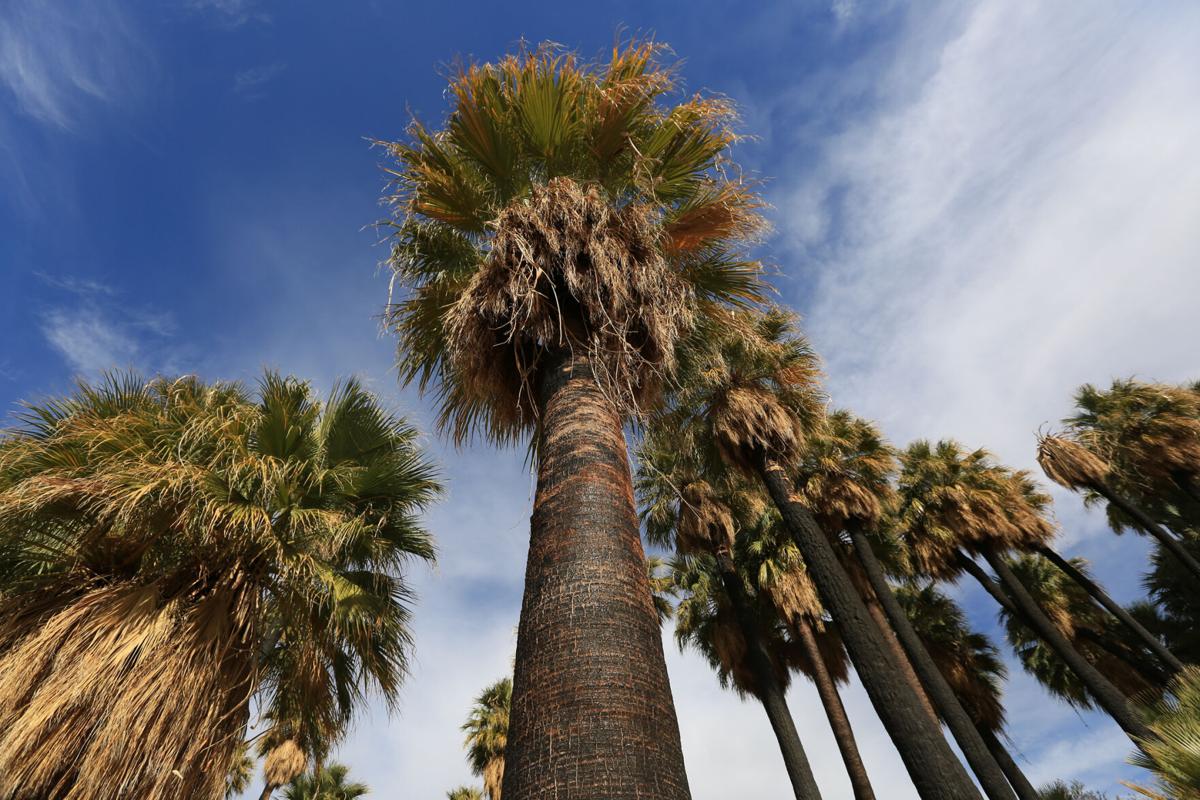The California fan palm (Washingtonia filifera) is the only native palm tree in the Western US and is also the largest. It is also called the Arizona fan palm, and appears naturally in our state in Palm Canyon, north of Yuma. The tree is fairly fast-growing and can reach heights of 60 feet in the landscape with a trunk width of up to 5 feet.
It’s a very stately looking tree, and when the fronds are left on the top they form a thatchy “beard” which is a great habitat for various wildlife. Some great specimens can be seen at Agua Caliente Park, where they regularly host nesting great horned owls. Unfortunately, in many landscapes the fronds are trimmed aggressively, causing not only damage to the tree but an ugly, unnatural “rooster tail” appearance.
Because of their large size, they tend to be most appropriate for larger areas. The trees can be planted during the warm part of the year but not after soil temperatures have cooled in the fall. They prefer well-draining soil, so make sure you don’t have caliche when you’re planting them. They will do well with anything from partial to full sun. You will need to give them palm fertilizer once a year to keep them looking their best, and water it in deeply.
Palms in our climate require some additional irrigation to be happy, particularly since this species only grows naturally in canyons. Give it a good deep soak every three to four weeks and it should look great. You can trim off the lower brown fronds periodically, or leave them in place to grow the natural thatch. The leaves can be a hazard for people walking below, so leave the thatch only if your tree is in a safe place away from walkways. However, avoid pruning it excessively. If you imagine a horizontal line going through the tree’s top, never trim the leaves above that horizontal line as it will not only look ugly but will damage the tree and limit its lifespan.
These palms are very fire-resistant, but can suffer frost damage at temperatures below 23 F. However, there are numerous reports on the internet attesting to its survival at temperatures in the single digits and even into negative digits, so it is likely very hardy once it’s well-established.
If you’re in an area with ground squirrels, javelina and other critters, I recommend planting a larger specimen (3-4 feet tall) as the small ones may get eaten. You may be able to get new ones for free — just look for sprouting clones near the base of the trunk of an established tree. If the tree’s owner allows you to dig them up, plant them in a pot with palm tree soil and water regularly. In a couple of years, you will have nice, large palms that you can transplant into your garden.
The fruits of the California fan palm are edible, and were harvested by indigenous peoples in the area. In addition, the leaves were used to cover homes and the fiber was used for baskets and rope.





